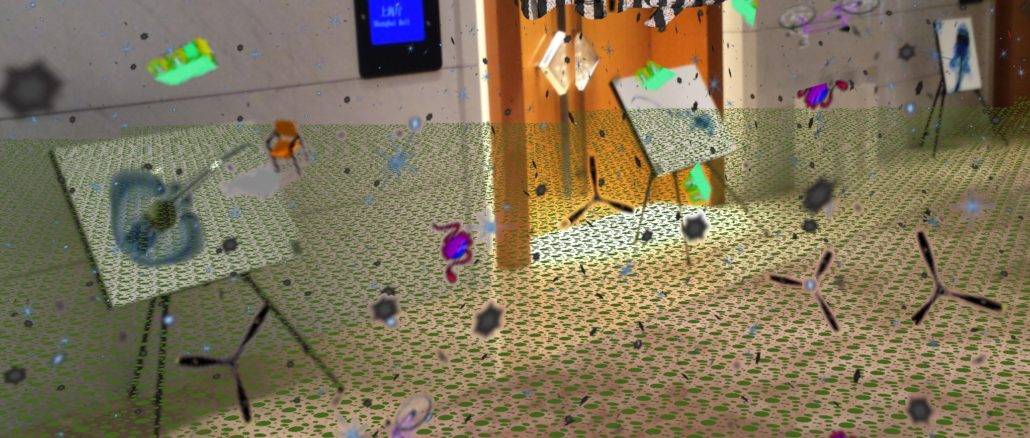
Art and Science can be considered as opposites, one based on fancy and the other based on fact. However in today’s world, many artists look for inspiration in science and many scientists are fascinated with the creative aspect of the arts. Science must not only be understood by scientists. A way must always be found to make it accessible to all, so that it can have the proper impact on society. Art is the perfect medium to represent science to everyone and lured in by the beauty of it, the scientific aspect that is the basis of the work inspires for science as well. The works selected for the exhibit “Prizing Art and Praising Science” are –as the title suggests– celebrated works which have received recognition as works that join science and art in unique ways.
List Selected Works
“Bios/βίος”, Roberta Trentin (ITL)
“Miasma and Screened For (series)”, Elaine Whittaker (CAN)
“Cleared – Fish Skeletons Visualized”, Adam Summers (USA)
“Bakterium – Vanitas”, Edgar Lissel (DEU)
“Dose”. Will Pappenheimer (USA)
“Silk Worm Project”, Vivian Xu (CHN)
“Floating Mushrooms On Tour, Studer /van den Berg (CHE)
Bakterium – Vanitas by Edgar Lissel (DEU)
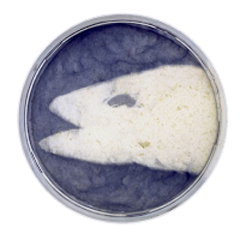
All works of the three series are products of a special procedure, based on the property of certain bacteria to orientate themselves towards light. Using this dependency on light, Lissel subjected bacterial cultures that were kept in transparent petri dishes filled with agar solution to pictures. As a result, the bacteria grew and aligned themselves to the pictures in a way comparable to photographic processes, where those spots on photographic paper that receive light darken, whereas those that are little exposed remain bright. The transitoriness of all matter is a central theme of the third series, Bakterium – Vanitas. Here Lissel employed classical still life motives such as fruit or animal corpses, whose disintegration is reflected in the petri dishes. The bright silhouettes of the objects are distinctly visible, yet one can also see that the bacteria started growing even in those places that received little light, such that they will eventually “outgrow” their own image. The representation fading away symbolises however the coming death of the object itself.
Dose by Will Pappenheimer (USA)
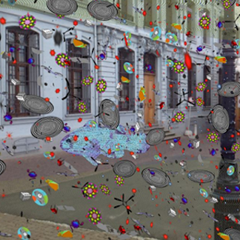
Dose is an invisible hallucinatory experience perceived through the users mobile device. Originally developed through the artist pharmaceutical, Virta-Flaneurazine, the psychic journey lasts for about 15 minutes before it reaches a completely enclosed ephemeral space.The work has been presented in diverse versions in many places in the world, picking up objects from many artists so that it goes beyond being a single artwork and forms into a collection of them.
Meet the artist:
Cleared – Fish Skeletons Visualized by Adam Summers (USA)
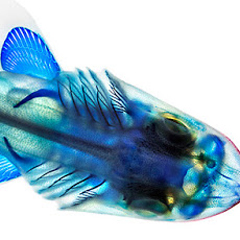
The fish depicted here have been specially treated to make the stained skeletal tissues visible through the skin and flesh. The technique uses two vital dyes – Alcian Blue to stain cartilaginous elements a deep blue and Alizarin Red S to turn mineralised tissue crimson. The specimen is then lightly bleached with hydrogen peroxide to remove dark pigments leaving a snow-white fish. Flesh is dissolved with Trypsin a digestive enzyme found in your intestine. Trypsin attacks most proteins but does not harm collagen the principle fibrous material that holds the skeleton and skin together. In order to make the skin and remaining connective tissue invisible the entire specimen is immersed in glycerin. The index of refraction of collagen is very similar to that of glycerin so the flesh seems to disappear. If you return the specimen to water the collagen will turn white again and the skeleton will be hidden. This technique is only effective on specimens that are less than about 1cm in thickness and takes much longer for thick specimens than thin. A small fish might take 3 days to process while a larger animal could take several months.
Meet the Artist
Bios/βίος by Roberta Trentin (ITL)

The foundation of my work is built upon my fascination with microorganisms. This fascination has found a domestic reality in my personal life. Coexisting with such organisms engages my mind and my visual thread, and I am thus able to embrace the discipline into my own practice. When a family is created, a new entity is born, and different layers are built one above the other. These layers consist of the emotions, hopes, needs, and efforts that circulate around the new entity. As a living organism, the new environment needs warmth, nurturing, and energy to grow, as well as values to share with the new generations to come. Microbial growth follows paths that are unpredictable and demonstrates how dynamic a true organic system is. The presence of microorganisms growing renders the piece itself into a vibrant and tangible living work.
Meet the Artist
The Silkworm Project by Vivian Xu (CHN)
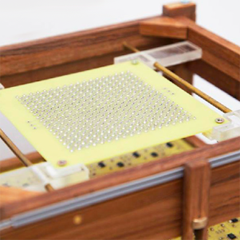
The Silkworm Project explores the possibilities of designing a series of hybrid bio machines that are capable of generating self-organized flat and spatial silk structures. The silk machines utilise a closed feedback loop system between the organic and the artificial, where the biological – in this case the silkworms, and the computational – the electronic and digital systems that house the worms, form one interactive eco-system that demonstrates automated production that is autonomous in its nature. The electronic component acts as an environment for the spinning insect as well as a hack into the insect’s behaviors, where the hack guides the worms to spin structures that stray away from their natural tendency – a cocoon, reflecting a blind spot of the insects spatial perception. The silk structure then becomes a documentation of the on-going confusion of the silkworm during its spinning process. Combinging the logic of both old and new technology,the machine represents the artist’s critical and artistic intersection between the organizations of silk and the organisation of information.
Miasma and Screened For (series) by Elaine Whittaker (CAN)
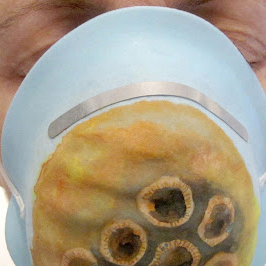
In his remarkable book, A Journal of the Plague Year, written in 1722, Daniel Defoe mixes historical records and his own personal experience to recount the “dreadful visitation” of the bubonic plague as it swept across London in the year 1665. Such dreadful visitations of microbial plagues are hardly a thing of the past. Leprosy, malaria, tuberculosis, Ebola, SARS, and others, still haunt the world. What will be the next great pandemic? Inspired by Daniel Defoe’s book, Miasma is an installation of brightly painted respiratory masks depicting an array of infectious diseases. In the Screened For photographic series the artist wears these masks. With her eyes closed or peering out tentatively, she asks us to consider our vulnerability and fragility. Are the very devices we employ to protect ourselves providing the safety we need when faced with the rampant spread of infections and disease? In a tension between the beauty of surprise and the horror of the unknown, these works depict the masks as unexpected vectors and hosts of infectious disease today. Ultimately they ask us to consider that fear and beauty reside in an uncomfortable dialectic, in this precarious time of contagions, epidemics and bioterrors.
Meet the Artist